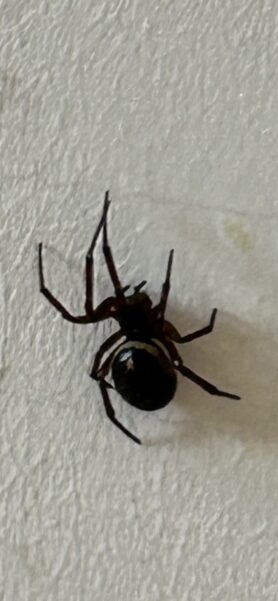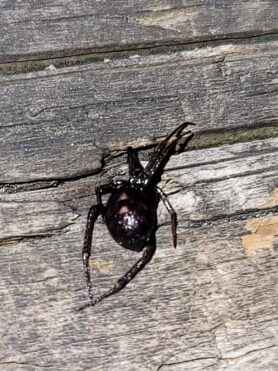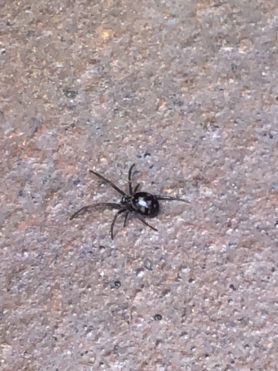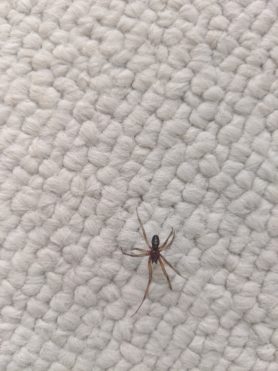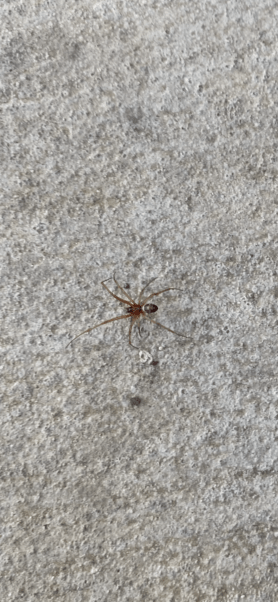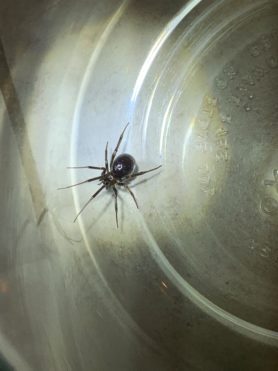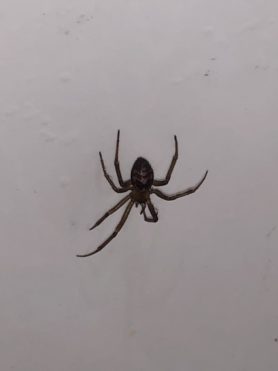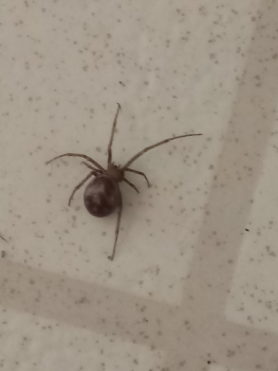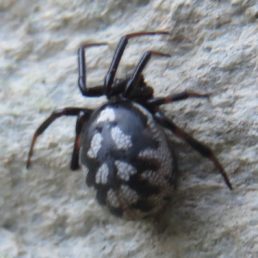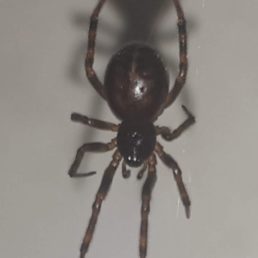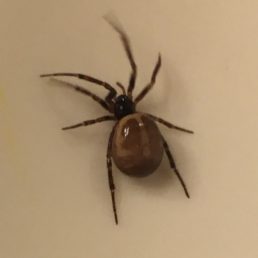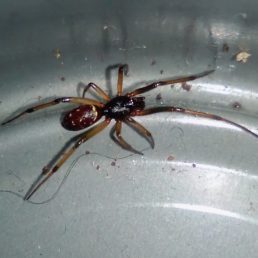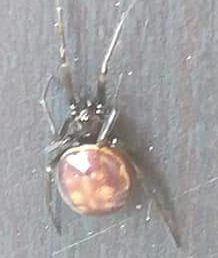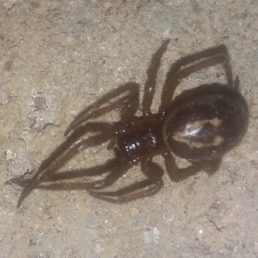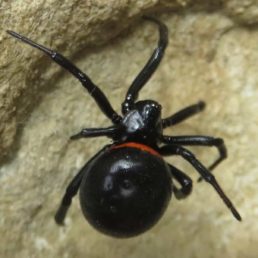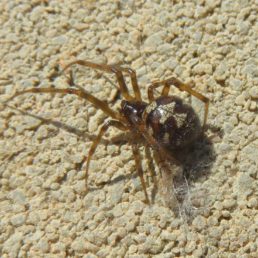Taxonomic Hierarchy
- Kingdom: Animalia
- Phylum: Arthropoda
- Class: Arachnida
- Order: Araneae
- Suborder: Araneomorphae
- Family: Theridiidae
- Genus: Steatoda
- Species: Steatoda grossa
Common Name (AAS )
)
False Black Widow
Other Common Names
Cupboard Spider, False Button Spider, Cobweb Spider, Cob Web Spider, Comb-footed Spider, Tangle-web Spider, Gumfoot-web Spider
Author
Carl Ludwig Koch, 1838
Primary Colors
Sightings Overview
There have been 158 confirmed sightings of Steatoda grossa (False Black Widow), with the most recent sighting submitted on March 1, 2024 by Spider ID member krsmith101. The detailed statistics below may not utilize the complete dataset of 158 sightings because of certain Steatoda grossa sightings reporting incomplete data.
- Web: 18% of the time, Steatoda grossa spiders are sighted in a spider web (Sample size: 158)
- Sex: 5 female and 40 male.
- Environment: Steatoda grossa has been sighted 27 times outdoors, and 140 times indoors.
- Outdoors: Man-made structure (14). Low foliage (2). High foliage (1). Ground layer (5). Under rock or debris (3). Open field, pasture, grassland (2).
Location and Range
Steatoda grossa (False Black Widow) has been sighted in the following countries: Australia, Bulgaria, Canada, Chile, France, Ireland, Italy, Mexico, Netherlands, New Zealand, Spain, United Kingdom, United States.
Steatoda grossa has also been sighted in the following states: California, Georgia, Kentucky, Maryland, Nevada, New Mexico, North Carolina, Oregon, South Carolina, Tennessee, Virginia, Washington.
Seasonality
Steatoda grossa has been primarily sighted during the month of April.
- January: 9
- February: 16
- March: 32
- April: 32
- May: 26
- June: 6
- July: 3
- August: 3
- September: 4
- October: 11
- November: 5
- December: 11
Additional Remarks
- This species is frequently mistaken for a real “black widow” of the genus Latrodectus. Real “black widows” have a bright red or orange hourglass-shaped marking on the underside of their abdomen, but Steatoda (the “false widows”) do not.
- Egg sacs are completely different from those of the real “black widows.” Steatoda sacs are made of fluffy-looking white silk; Latrodectus makes papery-looking brown or tan sacs.
- Females are variable in color and pattern depending on their age. Older adult specimens often lose their abdominal pattern and appear solid black, brown, or purplish; younger specimens have a unique pattern with a pale band across front of abdomen and additional pale spots or chevrons behind.
- Timid and non-aggressive species.
- Lateral eyes are nearly touching. (As opposed to the real “black widows,” whose lateral eyes are separated.)
- Typically only visible in their web at nighttime; spends the day hiding in crevices or holes on outskirts of web.
- Has been known to feed on real “black widows” (genus Latrodectus).
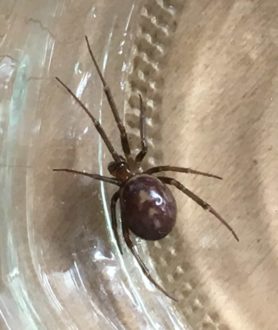 The spider species Steatoda grossa, commonly known as False Black Widow, belongs to the genus Steatoda, in the family Theridiidae. Steatoda grossa spiders have been sighted
The spider species Steatoda grossa, commonly known as False Black Widow, belongs to the genus Steatoda, in the family Theridiidae. Steatoda grossa spiders have been sighted 